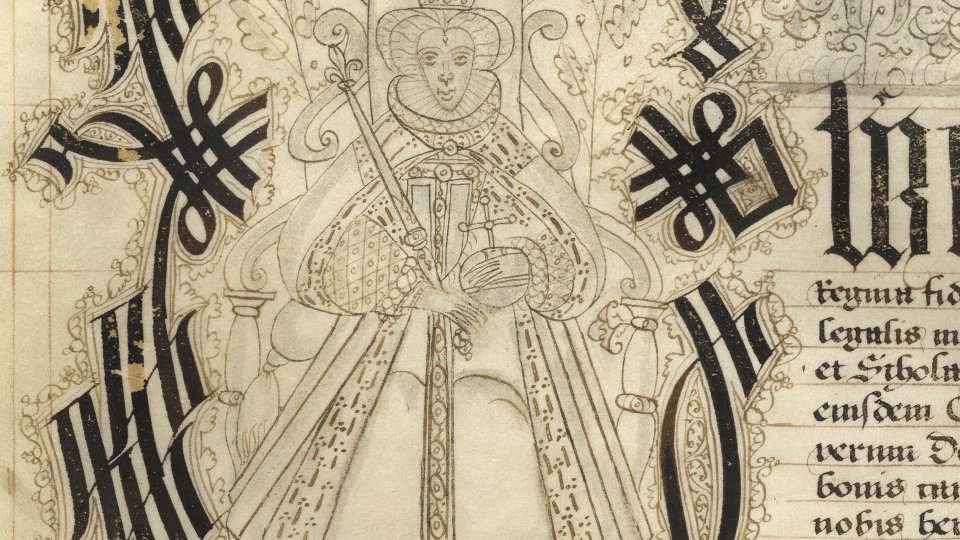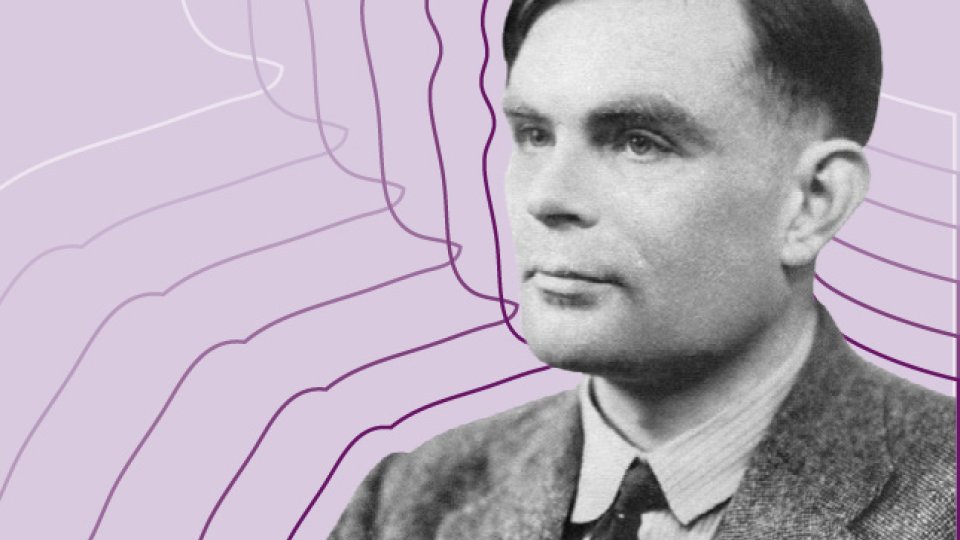![Alan Mathison Turing passport-style photograph [AMT/K/7/11] Alan Mathison Turing passport-style photograph [AMT/K/7/11]](https://www.kings.cam.ac.uk/sites/default/files/styles/medium/public/images/amt-k-7-11.jpg)
An exhibition about Alan Turing illustrated with documents from papers held at the Archive Centre. Most of this exhibition is available on the King's College, Cambridge YouTube channel; see 'Links' below.
Alan Mathison Turing was born on 23 June 1912, at Warrington Lodge, Warrington Avenue, London to Julius Mathison Turing and Ethel Sara Stoney. Julius worked in the Indian Civil Service, so until he retired in 1926 he fostered his children, Alan and John, out to English homes, in particular with the aptly named Wards in St Leonards-on-Sea.
Alan (the younger of the two) attended Hazelhurst preparatory school 1922-6. His schoolboy letters to his parents reveal his interest in mathematics and chemistry, often including his latest inventions.
Turing moved from Hazelhurst to Sherborne School in Dorset, whence he came up to King’s College Cambridge in October 1931. He received a First in Part II of the Mathematical Tripos in 1934 and was made a Fellow in 1935 for his work ‘On the Gaussian Error Function’. He remained a non-resident Fellow of the College until 1952.
The brilliant economist John Maynard Keynes was a King's Fellow during Turing's time here, and was a member of the Electors to Fellowships Committee. He wrote to his wife Lydia on 11 March 1935 'I had to lunch today the Fellowship candidate who seems much the cleverest on paper ... He is excellent – there cannot be a shadow of doubt ... Turing his name’ (see full text of the letter below).
Turing attended Max Newman’s Part III lectures on the Foundations of Mathematics in Spring 1935. These concluded with an outline of David Hilbert’s call for an answer to the question ‘Was mathematics decidable’? Newman encouraged Turing to consider whether there was some mechanical process which might be applied to a mathematical statement to ascertain whether or not it was provable.
Throughout 1935 and into 1936 Turing worked on his proof with Newman’s guidance. Determined to specify a ‘definitive method’, he described a machine (the ‘Turing Machine’ as it became known) working with a paper tape bearing printed symbols. What was the most general type of process this machine could perform?
This breakthrough in abstract mathematics provided the core concept for the later development of computing: the practical physical embodiment of an electronic machine supplied with logical instructions to perform any number of operations.
Turing’s famous article ‘On Computable Numbers, with an Application to the Entsheidungsproblem’, in the process of answering Hilbert’s question defined what we now know as the programmable computer, then called a ‘universal machine’.
The completion of his research into Hilbert’s Entscheidungsproblem in 1936 coincided with the decision to study at Princeton University with Alonzo Church. It was during this time that Turing’s deep and important paper Systems of Logic Based on Ordinals, published in 1939, was developed.
Turing would meet some of the best mathematicians of the day in Princeton: von Neumann, Weyl, Courant, Hardy, Einstein, Lefschetz, and Church. But first, he had to get there. He wrote to his mother (see letter dated 6 October 1936, below) about his trials and tribulations in travel.
One strangely prescient document in the Turing Archive is this letter Turing wrote from Princeton before the Second World War (see letter dated 14 October 1936, below), regarding ‘a lot of particular and interesting codes’. He did not sell his idea to ‘H.M. Government for quite a substantial sum’ as mentioned in the letter.
At the outbreak of the Second World War Turing joined the Government Code and Cypher School at Bletchley Park. He developed electronic technology to increase the speed of the mechanical operations that were performed thousands of times every day in decoding intercepted German messages. So well-kept were the secrets of the place that the importance of the Bletchley work was not fully realized until the 1970s when the research documentation (held in the US and UK national archives) was made public. Those working at Bletchley, such as Turing, were allowed to correspond with family and friends but never wrote about their work. A letter to his mother (see letter dated 1 November, below) talks only about a visit to King’s, plus the excitement of missing a bomb that fell near his lodgings while he was away. No one was hurt.
JM Keynes was himself an important figure in the Second World War. His address book (see below) records an unlikely Foreign Office address for Turing, further evidence of the secrecy of operations at Bletchley Park.
After the war Turing worked at the National Physical Laboratory (NPL) in Teddington, and took up long-distance running (ending his earlier dislike of outdoor pursuits). His new interest resulted in several successes in competitions.
At the NPL Turing’s technical design for the architecture of the Automatic Computing Engine (the ‘ACE’) was accepted in 1946. In frustration at the engineers’ slow and limited progress on building the full-scale ACE, he resigned in 1948 to take up the position of Deputy Director of the Computing Laboratory at Manchester University. In the late 1940s and 1950s he continued to research, write and broadcast on the emerging discipline of computing. His contribution was wide-ranging, across such issues as programming, neural nets and artificial intelligence. He continued also to work on mathematical logic, in particular the theory of types.
Turing’s seminal philosophical paper on artificial intelligence, ‘Computing Machinery and Intelligence’, was written in 1950. For the first time in print he outlined the ‘Turing test’ for the proof or otherwise that a computer could be the mechanical analogue of a brain, which he called ‘the imitation game’.
Turing continued to supervise students at King's.
Turing’s approach to artificial intelligence – a machine ‘learning’ from its existing state, its electronically stored experience and its programme – could be applied to the study of how a plant ‘knows’ to grow in a particular pattern, based on its existing state of growth, the environmental conditions, and its biologically stored ‘programme’. In the 1950s he began researching morphogenesis, the growth of cells, in order to discover how the development patterns of the embryonic tissue could be described in chemical terms. He concentrated on the study of phyllotaxis, which is the arrangement of leaves on the stems and florets on the heads of plants. In 1952 his paper on morphogenetic theory was published in the Proceedings of the Royal Society.
Turing wrote to Norman Routledge about his ‘trouble’, with typical poignancy, a romantic concern for others mixed with clear-headed awareness of the consequences including police surveillance, and wry humour (see letter below).
In 1952 Turing made a straightforward statement about his sexuality in connection with a theft of money from his home, apparently willing to be a martyr for the cause of decriminalising homosexuality. The guilty plea that his brother talked him into saved his mother from having to learn the truth through a trial.
On 8 June 1954 Turing was discovered dead by his housekeeper. He had been conducting an experiment with potassium cyanide, and he died of cyanide ingestion. His mother, unconvinced that he committed suicide, wrote ‘It seems quite probable he was intending to gold-plate [a silver spoon] using cyanide of potassium of his own manufacture’.
Leonard Cottrell was the police officer responding to the notice of Turing’s death. Cottrell’s deposition taken for the inquest describes Turing’s deathbed scene. The post mortem examination report records ‘death through cyanide poisoning’.
The papers of Alan Turing have been assembled in the Archive Centre at King’s College, Cambridge from a number of sources since 1960 when his mother, Sara Turing, made the first presentation. King’s College is also grateful to the Turing family, the Turing Trust, Prof. I.J. Good, Dr. Andrew Hodges, N.E. Hoskin, Prof. C.B. Jones, Dr. Norman Routledge, Prof. M.V. Wilkes, and Prof. Mike Yates for their generosity in providing documents and advice.
Digital images of most of the documents in the Turing collection can be viewed at www.turingarchive.org. These notes have been prepared with the help of Andrew Hodges’ book Alan Turing: The Enigma (Burnett Books Ltd., 1983).

